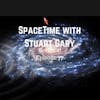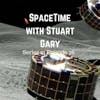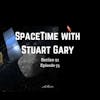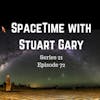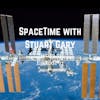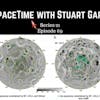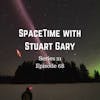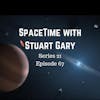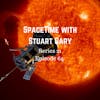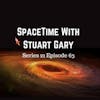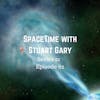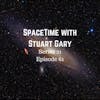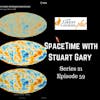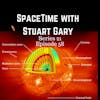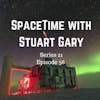Season 21
Oct. 23, 2018
78: Evidence For a Third Magellanic Cloud
The world’s premier astronomy and space science podcast.
Oct. 23, 2018
77: Echoes Of a Galactic Collision Involving The Milky Way
The world’s premier astronomy and space science podcast.
Oct. 23, 2018
76: Japan Lands On the Asteroid Ryugu
Japan has successfully deployed two lander rovers onto the surface of the asteroid Ryugu.
Oct. 10, 2018
75: Giant galaxy cluster discovered hiding in plain sight
Astronomers have uncovered a sprawling new galaxy cluster hiding in plain sight.
Oct. 10, 2018
74: How asteroid impacts shaped Earth’s ancient geology
A new study has found that some of the oldest rocks on the planet are the result of asteroids slamming into the primordial Earth causing its crust to melt.
Oct. 10, 2018
73: Space Station leak was man made
It’s been revealed that the hole found in the hull of a Russian Soyuz spacecraft which allowed atmosphere from the International Space Station to vent into space was made by a drill.
Oct. 10, 2018
72: New clues about Earth’s greatest mass extinction event
Halogens released during the Siberian Traps eruption may have been one of the driving forces behind the world’s greatest mass extinction event.
Oct. 10, 2018
71: All good aboard space station following leak repair
Mission managers say cabin pressure is holding steady following repairs after atmosphere began venting into space from a leak aboard the International Space Station.
Oct. 10, 2018
70: Earth’s Magnetic field reversals could happen faster than thought
A new study suggests that Earth’s geomagnetic field polarity reversals could occur overs the space of just two centuries – much faster than previously thought.
Oct. 10, 2018
69: Water confirmed on the Lunar surface
Scientists have directly observed water on the lunar surface for the first time.
Sept. 21, 2018
68: STEVE is not an aurora after all
A new study claims the strange auroral streams collectively dubbed STEVE are not auroral after all -- but an entirely new celestial phenomenon.
Sept. 21, 2018
67: Earth’s ingredients are fairly typical
A new study looking at material around distant stars suggests Earth’s ingredients are fairly typical.
Aug. 24, 2018
66: Ultra-bright early galaxies may be less common than we think
The world’s premier astronomy and space science podcast.
Aug. 24, 2018
65: New Horizons sees possible hydrogen wall at the end of the Solar System
The world’s premier astronomy and space science podcast.
Aug. 24, 2018
64: Parker Solar Probe launches
The world’s premier astronomy and space science podcast.
Aug. 24, 2018
63: No firewalls around black holes
The world’s premier astronomy and space science podcast.
Aug. 9, 2018
62: How our solar system was formed
Astronomers have shed new light on how solar systems are formed.
Aug. 3, 2018
61: Andromeda's galactic cannibalism
Scientists have discovered that the Andromeda galaxy M31 shredded and cannibalized a galaxy similar to the Milky way about two billion years ago.
Aug. 2, 2018
60: Water Discovered Under Martian South Pole
A huge subsurface liquid water lake has been detected near the Martian south pole.
July 27, 2018
59: Discrepancies infect the standard model of cosmology
Astronomers trying to work out how fast the universe is expanding - still can’t agree on a key figure in the standard model of cosmology – known as the Hubble Constant.
July 26, 2018
58: Sun’s rotation could influence lightning on Earth
A new study suggests the Sun's rotational cycle influences lightning activity on Earth.
July 20, 2018
57: Another possible volcano on Jupiter moon Io - SpaceTime with Stuart Gary S21E57
As NASA’s Juno spacecraft undertook its 13th close flyby of the gas giant Jupiter on Monday – earlier data appears to have turned up a new heat source close to the south pole of Io
July 19, 2018
56: Cosmic ray neutrinos traced back to their source - SpaceTime with Stuart Gary S21E56
A new study has identified a distant supermassive black hole called a blazar as the source of mysterious high energy cosmic ray neutrinos bombarding the Earth.


